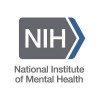
Brain Chemical Receptor Effects in Patients With Panic Disorder and Post-Traumatic Stress Disorder...
Panic DisorderPosttraumatic Stress Disorder1 moreThe purpose of this study is to examine how certain brain chemicals work in patients with Panic Disorder (PD) and Post-Traumatic Stress Disorder (PTSD) with and without major depressive disorder (MDD). Brain chemicals that regulate emotion, anxiety, sleep, stress hormones, and other body functions bind to serotonin (5-HT1A) and benzodiazepine (BZD) receptors. Evidence suggests that 5-HT1A and BZD receptor function is abnormal in patients with PD, PTSD, and depression. This study will use positron emission tomography (PET) scans to examine BZD and 5-HT1A receptor binding potential in patients with PD and patients with PTSD with and without co-morbid MDD, as well as in healthy volunteers. This study will also determine the effects of the stress hormone cortisol on 5-HT1A and BZD receptors. The current emotional state and psychiatric, medical, and family history of potential participants will be evaluated during an initial telephone interview. After entering the study, participants will be asked questions about general mood, degree of nervousness, and behavior. A physical examination, an electrocardiogram (EKG), and tests of intelligence and cognition will be given. Urine, blood, and saliva samples will be taken. Women will be given pregnancy tests and tests to determine menstrual phase and time of ovulation. All volunteers will undergo magnetic resonance imaging (MRI) and PET scans of the brain. ...

Mechanisms Linking Depression to Cardiovascular Risk
DepressionCardiovascular Diseases1 moreTo examine the role of depression on risk for cardiovascular disease in twins.

Glucocorticoid Effects on Cellular Cytokine Release
Depressive DisorderFatigue Syndrome4 moreA variety of hormones and immune system processes are responsible for how the body responds to illness. This study concentrates on how the hormone cortisol effects the release of immune system factors called cytokines. Cortisol is a hormone produced in the adrenal glands as a response to stimulation from the pituitary gland. Abnormal levels of cortisol have been seen in several diseases such as depression and multiple sclerosis. Cytokines are factors produced by certain white blood cells. They act by changing the cells that produce them (autocrine effect), altering other cells close to them (paracrine), and effecting cells throughout the body (endocrine effect). Cytokines are important in controlling inflammation processes. In this study researchers would like to determine if changes in levels of hormones in the blood are associated with changes in cytokine levels. In addition, researchers would like to learn more about how cytokines respond to hormones in certain diseases.

Effects of Sex Hormones on Circadian Rhythm in Men and Women
Bipolar DisorderCircadian Rhythm1 moreFor many years researchers have been trying to better understand the regulation of sleep and activity by studying circadian (daily) rhythms of human beings. It appears that the hormones estrogen, progesterone, and testosterone play a role in the regulation of circadian rhythm in animals. Researchers believe these hormones may also play a similar role in the regulation of human circadian rhythms. Little research has been conducted on how these hormones affect human circadian rhythms. This study is designed to learn more about how specific hormones influence men and women's daily rhythms. This study will use women from another research study being conducted at the NIMH called, "The central nervous system effects of pharmacologically induced hypogonadotropic hypogonadism with and without estrogen and progesterone". Male subjects will be recruited from another NIMH study called, "The central nervous system effects of pharmacologically induced hypogonadotropic hypogonadism with and without testosterone replacement". In order to test the possibility that gonadal steroids (estrogen, progesterone, and testosterone) change circadian rhythms and the sleep-wake cycle in humans, participants will undergo chronobiologic evaluations. The chronobiologic evaluations will look at sleep and rest periods, activity as measured by a wrist monitor, and 24 hour inpatient electroencephalograph (EEG), rectal temperature, and melatonin monitoring.

Postpartum Depression
Development of Depression PostpartumPostpartum depression (PPD) is one of the most common psychiatric complications of pregnancy and postpartum. It is often defined as an episode of depressive disorder that occurs in the postpartum period. Evidence suggests that PPD has serious consequences on the quality of life of all family members, increases the risk for familial conflicts, leaving great negative effects on maternal-infant interaction. The aim of our study was to investigate and shed the light on the determinants of development of PPD mainly maternal age among women in Jordan. We also aimed at examining additional factors on prevalence of PPD and providing more information on PPD among Jordanian mothers.

Impact of Covid-19 Pandemic on Patients Receiving Continuation or Maintenance Electroconvulsive...
Electroconvulsive TherapyMajor Depressive Disorder1 moreElectroconvulsive therapy is a safe and effective therapeutic strategy in patients with treatment resistant depression. As relapse after successful ECT is significant even with adequate pharmacological strategies, continuation (up to 6 months after completion of index-ECT) or maintenance ECT (more than 6 months after index-ECT) is often necessary to maintain remission. During the current Covid-19 pandemic hospitals redirected resources and closed or significantly diminished ECT services. In this study we aim to assess the impact of discontinuing maintenance electroconvulsive therapy in patients diagnosed with unipolar depressive disorder.

Shortened Depression Assessment Study
DepressionParticipants will be asked to fill out an online questionnaire about their demographics information and all 42 items from the Depression Anxiety Stress Scale (DASS-42). A series of machine learning techniques will be applied to the dataset to develop a shortened assessment using the most important demographics and DASS-42 items from the original questionnaire, to predict depression levels indicated by DASS-42.

PRediction Of Treatment Response to ECT in Depression and Cognitive Side effecTs
DepressionIt has been convincingly demonstrated that electroconvulsive therapy (ECT) works better and sooner than antidepressants in the treatment of certain subtypes of depression. Given this effectiveness, it would be unfortunate not to give ECT to patients with good response chances as this could substantially shorten the length of a severe depressive episode. Instead of going through all possible psychopharmacological treatment steps, ECT could be proposed much earlier as a treatment option for those patients who might have good response chances. This would be a great advantage for the severely depressed patient, with a decreased disease-burden and hospitalization duration. However, up to now, objective and reliable predictive factors for good ECT response have not yet been established. Clinical characteristics such as psychomotor retardation, psychotic features and age have often been used to predict the outcome of ECT, but there is too little evidence to consider these as strong predictive factors. The current project is designed to allow better prediction of ECT-response. The investgators base their selection of predictors on clinical impression and previous research results. The predictive capacity of psychomotor functioning, psychotic symptoms and several biomarkers will be investigated. With these clinical and biological patient and depression characteristics, the investigators aim to develop a decision making tool that will allow a more accurate indication of ECT. The investigators also investigate ways to predict whether or not a patient will have a good response when treatment has already started, based on an early improvement of psychomotor functioning. Another subject of great importance is predicting and preventing side-effects. When patients at risk for lasting cognitive side-effects can be identified early in the treatment course, treatment can be adjusted to prevent persistence of memory problems. Therefore, the second part of the study focuses on identifying people at risk for cognitive side effects early in the treatment course.

Optimizing Medication Management for Mothers With Depression
DepressionPregnancyThe purpose of this study is to explore the way the antidepressant concentration (amount of medication) in the blood changes due to the physiological changes in the body (i.e., changes in metabolism, hormones and body fluid) during pregnancy and postpartum and the impact of genetic factors on the degree of these changes. Changes in antidepressant concentration are important to monitor, as decreases in antidepressant concentration may lead to less than therapeutic drug levels, which may cause an increase in mood symptoms or recurrence of depressive episodes. Increases in antidepressant concentration have the potential to lead to increased side effects. The study team is hoping to better understand the course of these changes across pregnancy and postpartum and how an individual's genetic makeup impacts these changes with the goal of developing guidelines to optimize antidepressant treatment of pregnant women.

Family Psychoeducation for Major Depressive Disorder
Major Depressive DisorderThe aim of the present study is to compare an intervention consisting of Family Psychoeducation (FPE) to an active control intervention of social support for relatives of patients with a diagnosis of major depression.
